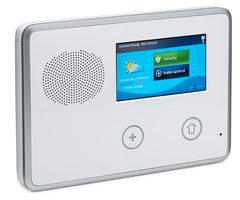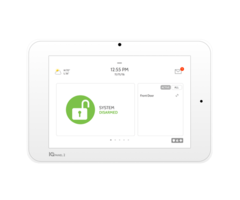How Do Home Security Systems Work?
Home security systems work by using security sensors in conjunction with an alarm control panel. Whenever a sensor is activated, it will send a signal to the control panel and cause a fault on that zone. The panel will then respond accordingly based on the Response Type for that zone.
The two primary components of a security system are security sensors and a control panel. The security sensors all connect with the control panel through either wireless or hardwired connections. Some common types of security sensors include door and window contacts, motion detectors and glass break sensors. Each sensor is assigned to its own unique zone on the security panel.
Whenever one of these sensors activates, it will send a signal to the control panel. The panel will recognize the sensor that faulted and respond based on the programmed Response Type for that zone. The Response Type for a zone is generally set based on the type of sensor that was activated. For example, if a door contact is activated, the user may choose a Response Type that requires the panel to be disarmed within the system's entry delay period. But if a carbon monoxide detector is activated, then the Response Type will most likely be to send out an immediate alarm, regardless of whether or not the system is armed or disarmed.
When an alarm event occurs, a distress signal will be sent out. The recipient of this signal will depend on the user's monitoring plan. If the system is protected by a central monitoring station, an operator will receive the distress signal and request emergency dispatch on the behalf of the user. But if the user has a self-monitoring plan, then user will receive a text or email notification letting them know about the alarm event. It will then be up to the user to contact the necessary authorities.
Did you find this answer useful?
We offer alarm monitoring as low as $10 / month
Click Here to Learn MoreRelated Products





Related Categories
- Answered
